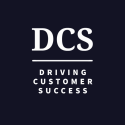Product Roadmaps Need a Customer Success Perspective
There’s an old parable that tells of three men coming upon an elephant in the dark, with each touching only a part of the creature to understand what it is. One person, whose hand lands on the elephant’s trunk, compares it to a snake; another touches the strong skin of the elephant’s side and describes it as a wall; the last grips the elephant’s heavy legs and thinks it resembles a tree trunk.
Since none of them has the full picture of the elephant, each is convinced of their own perspective. But when they talk to each other and compare notes, they gain a much more accurate understanding of the elephant.
The moral of the story? To get the whole picture, it’s important to see other perspectives. And when it comes to building a product roadmap in the tech world, that idea holds true.
A product team has a product-focused approach to a roadmap, but that often isn’t enough to create something that will entice customers. For a client-focused perspective, they benefit from consulting the customer success (CS) team. They are the experts in what customers want — be it ideas for new features or complaints that need to be addressed. On the other hand, customers don’t have a full picture of the product, how to move it forward or what is feasible to add or improve.
In short, neither team sees the full elephant. But by working together and listening to each other, they can get a much more complete perspective — and create a development roadmap that makes everyone happy.
While the role of the product team on a roadmap is pretty straightforward, it can be harder to determine how to get the CS team involved. To get some ideas and advice, Built In Chicago sat down with customer success managers from Qualtrics, PatientIQ, and RedShelf about the ways their teams influence their company’s roadmaps.

Peeler describes Qualtrics’s CS team as customer-obsessed in the extreme. They have several ways to obtain and organize feedback, which allows them to be strong advocates for their clients. He emphasizes the importance of developing cross-functional relationships with the product team — those relationships give the CS team a voice on the roadmap, to help develop Qualtrics’s experience management platform with the customer in mind.
Describe the process your team uses for funneling customer requests to the product team.
Being on the frontlines daily with our customers gives us unique access to fully understand their usage, needs, and ideas for the platform. We have a great product team who values direct customer feedback and wants to always be building in a way that will have the greatest impact on our customers.
We have three main channels to provide this feedback to the product. First, we have our own “frontline feedback” tool, which allows us to capture the product enhancement or request on behalf of the customer and route it to the product team. This also allows us to tag additional customers who are requesting a similar product enhancement or feature. Second, our product managers are great about hopping on calls directly with our customers to hear their challenges and ideas or to brainstorm. Lastly, we have key escalation meetings — these are weekly meetings where we can bring our most challenging issues forward to a cross-functional team across the company to determine if the fix may be the product, engineering, or elsewhere, which is extremely helpful for rallying as one team around an issue.
What are the main challenges that arise when customer success teams take greater ownership over the product roadmap, and how do you navigate them?
I think the main challenge, at least on my team, is that we may take customer obsession to a fault — we will work extremely hard to provide the most value possible to our individual customers.
However, with the diverse set of needs and programs, if you take that one-off approach to something like the overall product roadmap you will never build a cohesive and technically sound solution. I think it is great for CS to be able to advocate for their customers and find customers asking for the same thing to help influence the overall roadmap — but the product team plays a key role in looking holistically at the product and the future to serve the majority of needs across more than 15,000 customers.
Being on the frontlines daily with our customers gives us unique access to fully understand their usage, needs and ideas for the platform.”
What tips would you offer to a customer success manager or leader looking for greater influence over the product roadmap?
The challenge for every product team is that they are constantly making trade-offs and figuring out what to build next to delight and attract customers. The best way to help influence the roadmap is to have a business case around your suggestions or ideas that highlights the overall ROI for the business. It should include how it will delight our current customer base to use and enjoy our products more, attract new customers to switch over from competitors, or build the case for why the product is needed in their tech ecosystem to grow their own businesses.
I think it’s very important to understand the product manager’s role, job, and, most importantly, as people. Developing cross-functional relationships internally is key to influencing outside departments you may not have direct control over. So while it’s very easy to question why the product team wouldn’t build a feature that five of our top clients are asking for, having the relationship to sit down and understand their perspective and rationale in my experience is always eye-opening. When we sit down and understand each other, we gain the respect to have more influence in the future.
Jill Dunn, VP, CUSTOMER SUCCESS, PatientIQ

When it comes to healthcare, it’s important that feedback is addressed quickly and thoughtfully. PatientIQ has developed systems that funnel feedback from customers to CS to product, making communication easy. Dunn highlights the importance of compromise — since the CS and product teams have different focuses, they’ll have different ideas, but communication and respect can lead to something everyone is happy with.
Describe the process your team uses for funneling customer requests to the product team.
At PatientIQ, we are always refining our process — but we currently use feedback loops specific to the type of feedback we have received. For instance, if a new customer request is submitted, then CS submits a ticket to our product team or tags the customer to an existing request. Then, based on criteria defined by leadership and our company strategy, the product team moves the request to the next stage. The CS team has a clear line of sight to when the request will be reviewed, where it is in the development process and timing once the request has been triaged.
What are the main challenges that arise when customer success teams take greater ownership over the product roadmap, and how do you navigate them?
From my perspective, the biggest challenge to having a very customer-focused product roadmap is that it can become very reactionary. While we strive to be great partners with our customers at PatientIQ and want to incorporate as much feedback as possible that they provide, we also need to maintain sight of the broader vision and strategy of the company. At PatientIQ, we are always working to discipline our approach and stick to our development commitments and goals, while also leaving room to react or incorporate client feedback, but not let it overtake the whole process.
CS leaders and their product partners need to work towards the overall strategy of the company, as well as what drives customer satisfaction and retention.”
What tips would you offer to a customer success manager or leader looking for greater influence over the product roadmap?
My best advice for other CS leaders is to use more than anecdotal information for product feedback, back it up with data around the customers and the impact on revenue. Work closely and build relationships with customers who can provide solid feedback in the development process — this will help inform if you are building in the right direction.
The last piece of advice I would provide is to remember it is all about compromise. CS will always have more requests than the team can deliver, so CS leaders and their product partners need to work towards the overall strategy of the company, as well as what drives customer satisfaction and retention.
Nicole Komassa, VP, CUSTOMER SUCCESS, RedShelf

RedShelf is an EdTech company looking to make educational materials more affordable and accessible. Komassa warns of the “black hole of feedback,” where feedback is passed along and never seems to be addressed. To prevent that, she encourages CS teams to attach appropriate enthusiasm and emphasis to feedback when talking with the product team, highlighting what customers seem to care about most and making sure that’s reflected in the roadmap.
Describe the process your team uses for funneling customer requests to the product team.
Internal and external feedback go through the same process. First, the problem manager on our customer experience team conducts an initial review, ensuring requests are clear and complete. Once reviewed, the problem manager elevates the issue to the appropriate Product Owner for their review and overall assessment. If similar feedback is submitted, the Problem Manager associates those new instances with the original request. Communication is king.
What are the main challenges that arise when customer success teams take greater ownership over the product roadmap, and how do you navigate them?
The biggest challenge I have experienced not only at RedShelf but other companies are the “black hole of feedback.”
Customer-facing teams put effort into collecting feedback and setting expectations with customers about what may or may not happen next. It gets passed along, but then we never hear back. Worse still is not seeing feedback make it onto the roadmap — this is demotivating for not only customers but also the teams helping to collect the feedback.
If a key customer is especially excited about an idea, make sure there is the appropriate amount of heat attached to their feedback.”
What tips would you offer to a customer success manager or leader looking for greater influence over the product roadmap?
Depending on your process for delivering feedback, set a regular cadence with product to follow up on suggestions — this may be quarterly or right before a new roadmap iteration. If a key customer is especially excited about an idea, make sure there is the appropriate amount of heat attached to their feedback — tenure, revenue, account health, and so on can provide great context. Finally, being able to tag multiple instances of the same feedback is important, as it demonstrates the depth and potentially a shift in the use case.
Original post on Built In Chicago

Hakan Ozturk
Founder, theCScafe.com, #1 Weekly Customer Success Newsletter
Hakan Ozturk is a Paris-based Customer Success leader with over 15 years of experience in the computer software industry. Passionate about driving growth and delivering value to strategic customers, Hakan has established himself as a trusted industry expert. As the Founder of The Customer Success Café Newsletter and TopCSjobs.com, Hakan provides valuable industry insights and daily-updated job opportunities worldwide in the field of Customer Success. Connect with Hakan to boost your career in CS and your company’s potential for massive growth.

Leave a Reply